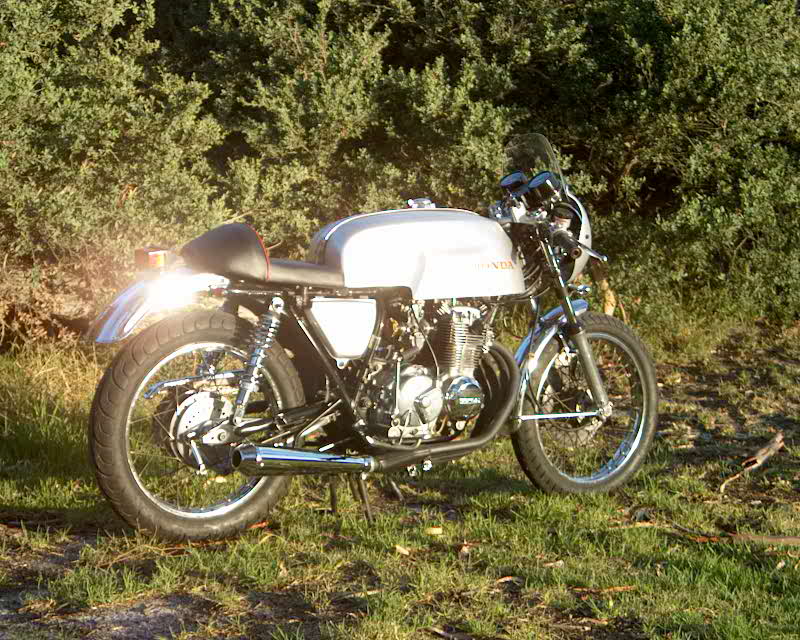Alrighty, on Friday I'm going to look at a "CB400-4 Super Sport", that's really all I know. That would make it a CB400F so it's somewhere between 1972 and 1978? Apart from compression, fuel air and spark, what else should I look for? It's $600 obo and from the one picture it looks to be in OK shape with everything being there.
Suggestions?
(Run away you idiot / Buy it now dummy)

Woody
SuperDork
11/16/11 11:35 a.m.
They were made between 75 and 77.
75-76 are the same, with low bars and rear sets and a big chrome gas cap. 77s have higher bars, no rear sets and a black plastic cover over the gas cap. They may also have different turn signals. They all need a steering stabilizer.
If it's been sitting for a while, resist the temptation to squeeze the front brake lever until you can get it to where you can work on it a bit. The brake pistons corrode and will lock up the front brakes and you won't be able to move the bike. My CB's would do this after every winter, but it's an easy job.
I resurrected a 77 400F that hadn't been started in about 8 years and then rode it for a year. My total investment (minus gas) was about $50 (plugs, points, air filter and steel wool).
They're great little bikes. There should be a tool kit and an owner's manual under the seat. The manual will show you how to do everything that it will need and you'll have all the tools except a timing light. Be careful with the cam chain adjuster, as they are easy to strip. K+N filters make them run crappy unless that carbs are properly rejetted and it has a new pipe. Stick with the stock airbox. It doesn't look as cool, but you will be happier with your bike
These are great little bikes and the red line is up around 10,000 rpm. Use them all.

Rusted exhaust pipes, torn carb diaphragms.
Rusted inside of the tank.

They're very nice little bikes, I've had one for a while and a friend of mine has what is probably one of the nicest, most original ones in the UK.
Anyway, from memory:
- It's a Honda with a camchain adjuster that often doesn't. They all do that, but if the PO doesn't know about this the engine can be damaged.
- IIRC the oil filter bolt has a ridiculously small head that often gets damaged - an aftermarket one with a bigger head is a good investment
- Honda's swinging caliper front brake tends to not swing anymore. Fun job to dismantle.
- One of the fuses in the fusebox tends to get overloaded, but not to the extent it blows. It just melts a hole in the fusebox and fusebox cover. Good luck finding a new one.
- Typical Honda SOHC - the cam runs in the (aluminum) head without bearings. Dirty oil with irregular changes is really good at causing expensive mayhem.
- OEM exhaust is expensive and hard to find, plus it likes rusting. Make sure it's got OEM downpipes and the collector isn't rotted out, otherwise prepare to have your wallet raped
- Check if it's still got the lid on the toolbox. They're often missing, very hard to find and expensive
- Same goes for the lift handle under the seat - OEM isn't available anymore, they're often missing and the ones you can still get from the Honda parts bin aren't quite right.
- Most aftermarket seats might look like the originals but have all the comfort of a plank. Important if you want to ride it for a few miles.
Other than that it was one of the best handling 70s Japanese motorcycles and they're huge fun to ride. I wouldn't mind another one.



















